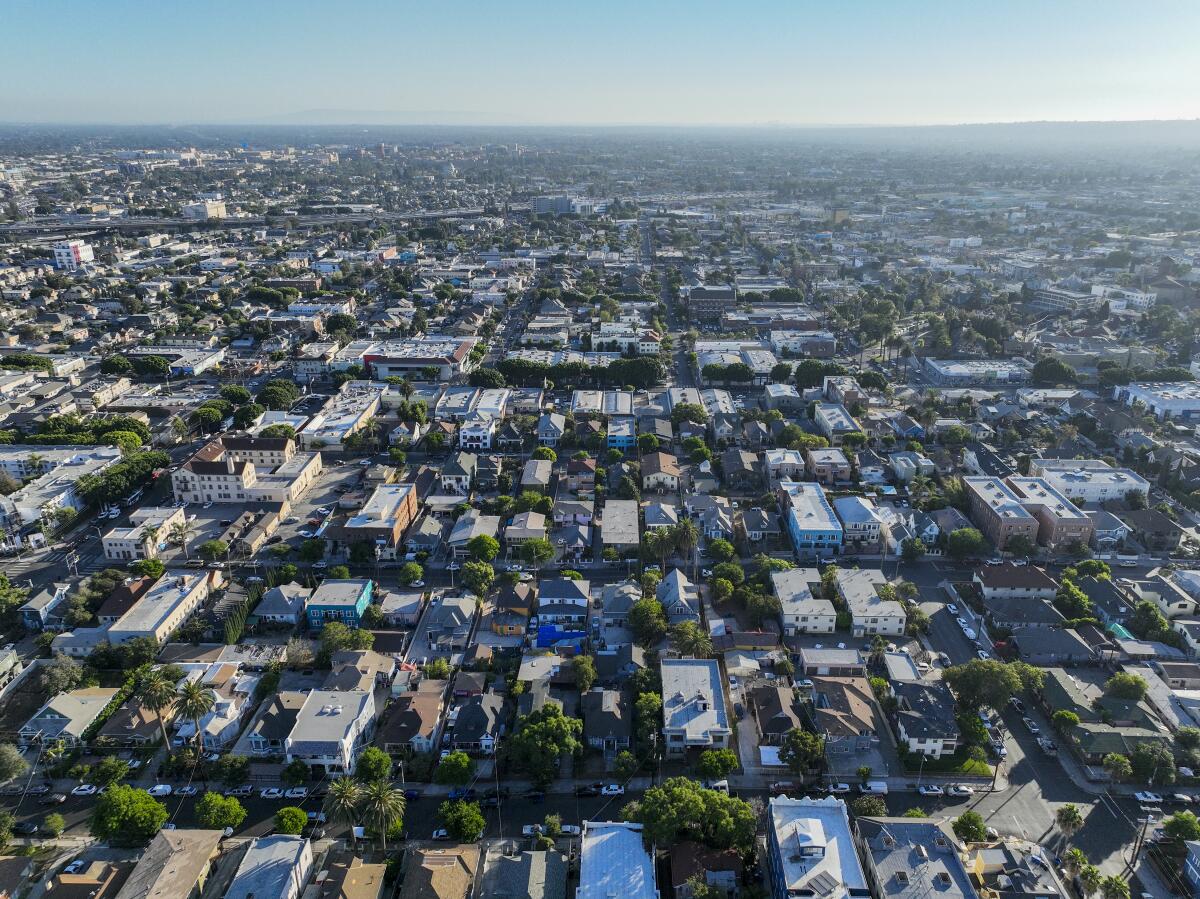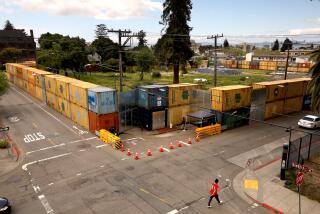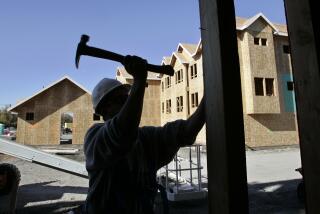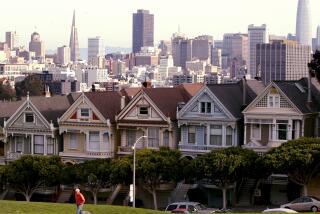Opinion: California housing and the environment are often at odds. They don’t have to be

- Share via
California’s housing shortage and climate crisis are often treated as if they are unrelated to each other. In fact, they are deeply interconnected.
We need to address not only how much housing we build but also where we build it. That’s the idea and the promise behind new legislation backed by a novel coalition of housing and environmental advocates.
California must add at least 2.5 million new homes by 2030 to meet its needs. Decades of underproduction have exacerbated skyrocketing rental prices, put homeownership increasingly out of reach for most Californians and pushed more of our neighbors into homelessness than in any other state. The housing shortage is driven in large part by local government policies that prevent new housing from being built in existing neighborhoods, forcing most development into exurban and rural areas.
Without enough affordable housing near jobs, schools, transit and other resources in existing communities, Californians are increasingly forced into long commutes from remote areas that are often more vulnerable to wildfires, flooding and other climate-accelerated disasters. Between 1990 and 2010, half the housing development in California was at the edge of wilderness areas, known as the “wildland-urban interface,” or WUI. As a result, about 25% of Californians live in areas at high risk of catastrophic wildfire.
Expanding development into natural lands not only puts more people in harm’s way; it also increases the likelihood, frequency and devastation of fires, floods and other disasters. Human activities spark most wildfires. And development often paves over floodplains that could otherwise absorb rainfall and runoff, making floods more common and destructive.
California has lost more than 1 million acres of natural habitat to development over the past 20 years. Forests, wetlands, coastal areas, grasslands and rivers provide clean air, fresh water and access to green spaces for all of us. The movement of housing into more remote regions fragments wilderness, reduces community resilience and exacerbates the global biodiversity and climate crises, affecting every Californian.
We need to reframe the way we think about the relationship between housing policies and climate change. We need to significantly increase the number of homes we build, but if we do so in the undeveloped wildland-urban interface, we will only worsen the climate crisis. Building housing far from jobs doesn’t just require longer commutes and new roads, increasing the pollution that causes climate change. It also reduces the landscape’s ability to store carbon by paving over natural and agricultural lands that would otherwise remove it from the atmosphere. And it destroys or degrades wildlife habitat and increases water demand in areas where wells are already running dry.
Assembly Bill 68, introduced last week by Assemblymember Christopher M. Ward (D-San Diego), would expedite approval of new housing in areas close to jobs, schools, parks, transit and other amenities. It would make it faster, cheaper and easier to build housing in safe, environmentally smart locations. It would do so by requiring such housing to be approved through an objective, streamlined process that eliminates needless delays.
AB 68 would also ensure that local governments approve such housing within existing communities before they allow development of the open space and farmland that make us more climate-resilient. Cities and counties that want to add more housing in undeveloped “greenfields” will essentially have to demonstrate that a similar amount of housing can’t be built in neighborhoods that already have infrastructure and services. Most cities and counties could accommodate much more such climate-safe housing, but severe restrictions on infill construction effectively mandate sprawl, pollution and disaster.
This legislation’s counter-mandate — don’t sprawl unless you must — takes a novel approach to land use. For most of the last 50 years, California’s tight restrictions and outright bans on dense, multifamily housing in existing neighborhoods have made low-density, single-family, greenfield housing the default when we do accommodate growth. And while recent legislative reforms have sought to ease development of affordable, multifamily housing in cities by reducing zoning, planning and other restrictions, it’s still easier in many cases to build in rural areas that are more vulnerable to fires and floods. AB 68 would begin to correct the incentives that too often pit the need for housing against environmental stewardship by encouraging sprawl.
It’s significant that the environmental and housing movements are coming together to address these problems. Historically we have worked separately or have even been at odds. Environmental and conservation organizations, focused on maintaining vital habitats, protecting air and water quality and preserving open spaces, sometimes oppose development and growth in general. Meanwhile, housing advocates working to open up cities and towns to more housing development may have been less concerned about the dangers of building where we shouldn’t.
Now our issues are colliding. The housing affordability crisis has become a significant contributor to loss of habitat as well as climate pollution, so we’re breaking our silos and working on a shared vision. These problems are inextricable from each other, and we need to tackle them together.
Melissa Breach is the chief operating officer of California YIMBY. Liz O’Donoghue is the director of sustainable and resilient communities strategy for the Nature Conservancy.
More to Read
A cure for the common opinion
Get thought-provoking perspectives with our weekly newsletter.
You may occasionally receive promotional content from the Los Angeles Times.










